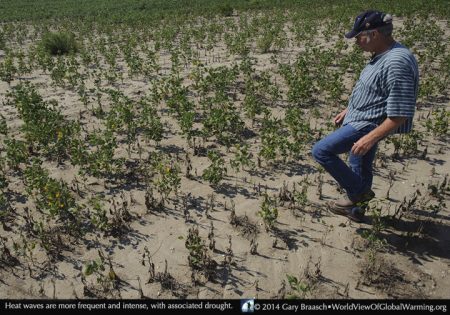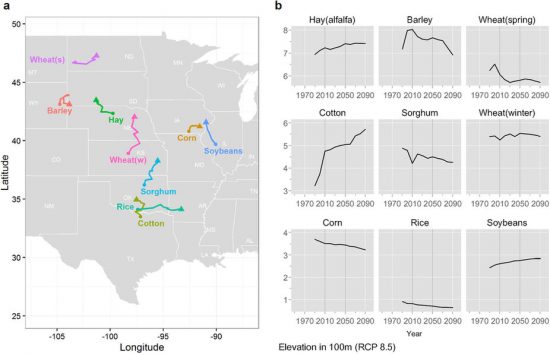January 24, 2017 – A new published study appearing in Scientific Reports describes changes to historic planting of crops in the United States looking at temperature, precipitation and other causal factors, and projects the distribution and types of crops in the future in the face of climate change.
Observed shifts in crop plantings between 1970 and 2010 are analyzed. The findings show that warmer temperatures and drier conditions impact some crops more than others. Temperature effects cotton, rice, sorghum and winter wheat. Farmers when confronted with drier conditions plant more sorghum, winter wheat, spring wheat and hay. When wetter the move is to corn, cotton, rice and soybeans.
The analysis of crop shifts correlated to climate change varies widely. By latitude climate change may explain between 7 and 50% of changes in crops planted. By longitude, 20 to 36%. And by elevation 4 to 28%. These are significantly large variables.
The authors of the study, however, see a trend in future crop mixes pointing to an overall shift in farming production moving north and east from current centers.
The analysis compiled almost 100,000 records from 2,693 U.S. counties in 41 states to determine land use and crop types and covered 96% of the country’s farmland.
Historic crop mixes and planting shifts can be linked to changes in climate with a westward movement noted for cotton, hay, spring wheat and corn, a northern movement for winter wheat, soybeans, corn and hay, and higher elevation movement for hay, soybeans, spring wheat and corn.
Future shifts based on current climate change models and climate data trends can be seen in the infographic displayed below. Each crop label displayed shows a starting point and the directional shift expected based on climate change models. The charts to the right of the map indicate expected elevation shifts in ten-year period increments.
Of the primary crops grown in the United States, the study indicates the least impact to be on corn. All the rest are far more susceptible to a warmer and drier Midwest which today represents the agricultural heartland.
The research methodology was developed by Sung Ju Cho, Korea Rural Economic Institute. The study was set up by Bruce A. McCarl, Department of Agricultural Economics, Texas A&M University.












